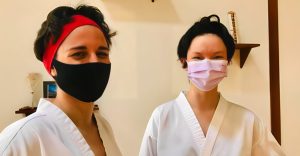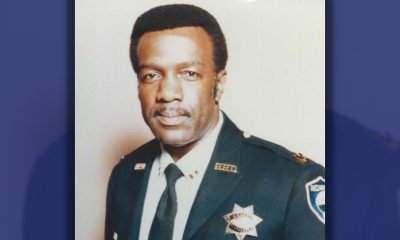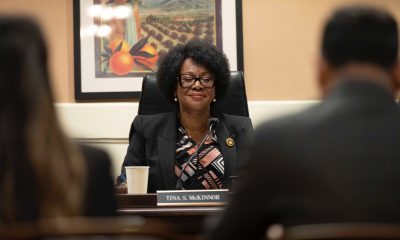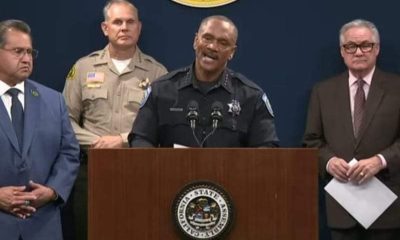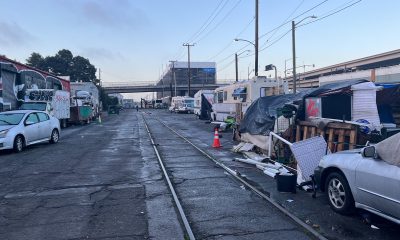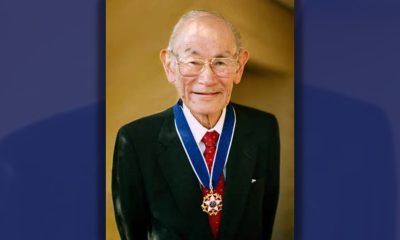#NNPA BlackPress
The California Towns Where Blacks Feared Sundown

In the Aug. 16 premiere of the HBO show “Lovecraft Country,” created by Misha Green and based on the novel of the same name by Matt Ruff, the main characters drive past a sign that reads “[N-word]s, don’t let the sun set on you here. Understand?” Towns that banned African Americans in the mid-20th century would, either formally or informally, put up intimidating signs like that at the town limits to remind Blacks passing through that they were not welcome.
These places, known commonly as “sundown towns,” existed across the nation. Many of them were in California, too.
The memory of sundown towns re-entered our collective cultural conscience recently as incidents of police brutality have pushed people to speak out against racism. The book “Sundown Towns: A Hidden Dimension of American Racism,” written by sociologist James W. Loewen, was originally published in 2005.
In the preface of the re-printed 2018 edition, Loewen noted that while sundown towns are on the decline, some former sundown towns have shifted from overt to systemic racism through policies such as “Driving While Black policing.” He cites the shooting of Michael Brown in Ferguson, Mo., as an example.
There is a widespread misconception that sundown towns were mostly concentrated in the Deep South and Midwest, as depicted in Lovecraft Country’s first episode of the series, which was set along the highway route from Chicago to Massachusetts.
But similar sundown towns existed in the West as well, including in California up until the mid-20th century. The national sundown town database on Loewen’s website lists 112 possible sundown towns in California.
These towns are categorized on the website as either possible, probable, or surely, as it is difficult to categorize “sundown towns” because of varying degrees of explicitness in their approaches to discouraging African Americans and other non-white visitors.
California cities classified as “surely” sundown towns on Loewen’s website include Brea, Chico, Culver City, El Segundo, Fresno, Glendale, Hawthorne, La Jolla, Palmdale, San Marino and Taft. Cities that are now majority Black and Brown, including Compton and Inglewood in Southern California, previously barred Black residents. The list also includes some entire counties as surely sundown in the past.
Evidence listed on Loewen’s website includes census records and anecdotes submitted by citizens or discovered through research. The anecdotes listed include alleged cross burnings and other threats towards Black homeowners, and alleged expulsions of entire ethnic groups. Though many sundown towns have strong oral histories, with residents and locals confirming their existence, sundown ordinances were usually not part of a city’s records.
Loewen wrote, “I read at least 300 local histories — some of them elaborate coffee table books — about towns whose sundown histories I had confirmed via detailed oral histories, but only about 1% of these mentioned their town’s racial policies. In conversation, however, the authors of these commemorative histories were often more forthcoming, showing that they knew about the policy but didn’t care to disclose it in print.”
In her book “Wandering in Strange Lands,” author Morgan Jerkins spoke with a woman named Rachelle, who shared her memories of sundown towns in Los Angeles County. “I can remember when a Black person had better not go to Glendale or Culver City and be there after five o’clock.”
In addition to African Americans, other ethnic groups were also excluded from cities. In 1885, about 320 Chinese Americans were expelled from Eureka, Calif., after a Chinese man accidentally shot a city councilman.
According to an article in the North Coast Journal, multiple towns around Eureka followed suit, and Chinese Americans were expelled from an estimated 40 communities in Northern California in 1885 and 1886.
According to Chapter 14 of Loewen’s book, “Sundown Towns Today,” California has integrated its communities more than other states with historic sundown towns, with many cities eliminating discriminatory laws and removing warning signs.
In 2017, the National League of Cities (NLC) announced a collaboration with the Center for Social Inclusion to help local government officials advance racial equity in their cities. The mission of NLC’s Race Equity and Leadership Initiative is to “strengthen the knowledge and capacity of local elected officials to eliminate racial disparities, heal racial tensions and build more equitable communities,” according to their website.
However, racial animosity still exists as shown by the multiple Black Lives Matter protests that have occurred in the state since May. In a time of civil unrest and calls for revolution, history is revealing and asserting itself.
“Sundown towns have never gone away,” wrote Jerkins in a recent article. “As long as Black people have stories of what has happened to them or others for being in the wrong place at the wrong time, and as long as White people terrorize Black people who move into their neighborhoods, or create laws to restrict them from living there in the first place, sundown towns will always be a part of the fabric of American culture.”
#NNPA BlackPress
IN MEMORIAM: Ramona Edelin, Influential Activist and Education Advocate, Dies at 78
NNPA NEWSWIRE — Born on September 4, 1945, in Los Angeles, California, activist Ramona Edelin’s early years were marked by a commitment to education and social justice. According to her HistoryMakers biography, after graduating from Fisk University with a Bachelor’s degree in 1967, she pursued further studies at the University of East Anglia in England. She earned her master’s degree before completing her Ph.D. at Boston University in 1981.
The post IN MEMORIAM: Ramona Edelin, Influential Activist and Education Advocate, Dies at 78 first appeared on BlackPressUSA.

By Stacy M. Brown, NNPA Newswire Senior National Correspondent
@StacyBrownMedia
Once upon a time, Black Americans were simply known as colored people, or Negroes. That is until Ramona Edelin came along. The activist, renowned for her pivotal roles in advancing civil rights, education reform, and community empowerment, died at her D.C. residence last month at the age of 78. Her death, finally confirmed this week by Barnaby Towns, a communications strategist who collaborated with Dr. Edelin, was attributed to cancer.
Born on September 4, 1945, in Los Angeles, California, Edelin’s early years were marked by a commitment to education and social justice. According to her HistoryMakers biography, after graduating from Fisk University with a Bachelor’s degree in 1967, she pursued further studies at the University of East Anglia in England. She earned her master’s degree before completing her Ph.D. at Boston University in 1981.
Edelin’s contributions to academia and activism were manifold. She was pivotal in popularizing the term “African American” alongside Rev. Jesse L. Jackson in the late 1980s.
Jackson had announced the preference for “African American,” speaking for summit organizers that included Dr. Edelin. “Just as we were called Colored, but were not that, and then Negro, but not that, to be called Black is just as baseless,” he said, adding that “African American” “has cultural integrity” and “puts us in our proper historical context.”
Later, Edelin told Ebony magazine, “Calling ourselves African Americans is the first step in the cultural offensive,” while linking the name change to a “cultural renaissance” in which Black Americans reconnected with their history and heritage.
“Who are we if we don’t acknowledge our motherland?” she asked later. “When a child in a ghetto calls himself African American, immediately he’s international. You’ve taken him from the ghetto and put him on the globe.”
The HistoryMakers bio noted that Edelin’s academic pursuits led her to found and chair the Department of African American Studies at Northeastern University, where she established herself as a leading voice.
Transitioning from academia to advocacy, Edelin joined the National Urban Coalition in 1977, eventually ascending to president and CEO. During her tenure, she spearheaded initiatives such as the “Say Yes to a Youngster’s Future” program, which provided crucial support in math, science, and technology to youth and teachers of color in urban areas. Her biography noted that Edelin’s efforts extended nationwide through partnerships with organizations like the National Science Foundation and the United States Department of Education.
President Bill Clinton recognized Edelin’s expertise by appointing her to the Presidential Board on Historically Black Colleges and Universities in 1998. She also co-founded and served as treasurer of the Black Leadership Forum, solidifying her standing as a respected leader in African American communities.
Beyond her professional achievements, Edelin dedicated herself to numerous boards and committees, including chairing the District of Columbia Educational Goals 2000 Panel and contributing to the Federal Advisory Committee for the Black Community Crusade for Children.
Throughout her life, Edelin received widespread recognition for her contributions. Ebony magazine honored her as one of the 100 Most Influential Black Americans, and she received prestigious awards such as the Southern Christian Leadership Award for Progressive Leadership and the IBM Community Executive Program Award.
The post IN MEMORIAM: Ramona Edelin, Influential Activist and Education Advocate, Dies at 78 first appeared on BlackPressUSA.
#NNPA BlackPress
Tennessee State University Board Disbanded by MAGA Loyalists as Assault on DE&I Continues
NNPA NEWSWIRE — Recent legislative actions in Tennessee, such as repealing police reform measures enacted after the killing of Tyre Nichols, underscore a troubling trend of undermining local control and perpetuating racist agendas. The new law preventing local governments from restricting police officers’ authority disregards community efforts to address systemic issues of police violence and racial profiling.
The post Tennessee State University Board Disbanded by MAGA Loyalists as Assault on DE&I Continues first appeared on BlackPressUSA.
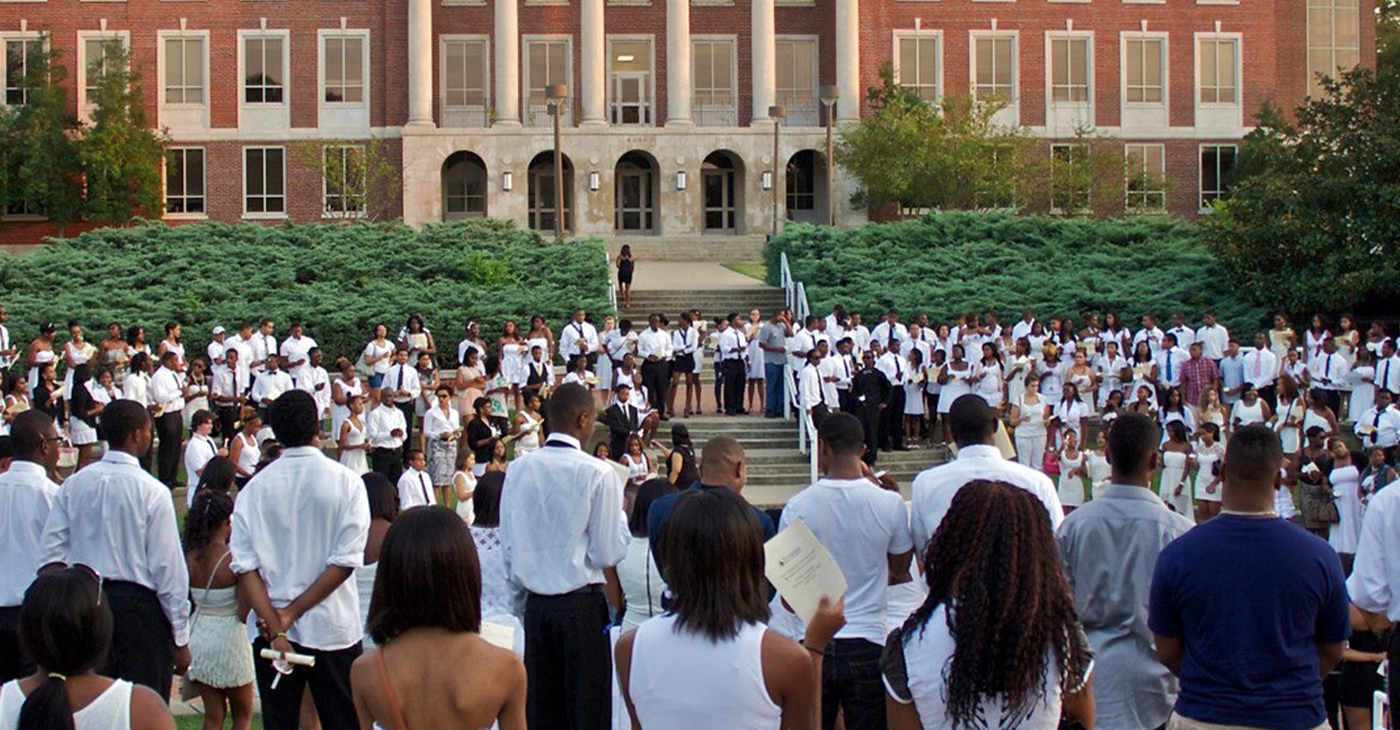
By Stacy M. Brown, NNPA Newswire Senior National Correspondent
@StacyBrownMedia
Tennessee State University (TSU), the state’s only public historically Black college and university (HBCU), faces a tumultuous future as Gov. Bill Lee dissolved its board, a move supported by racist conservatives and MAGA Republicans in the Tennessee General Assembly, who follow the lead of the twice-impeached, four-times indicted, alleged sexual predator former President Donald Trump. Educators and others have denounced the move as an attack on diversity, equity, and inclusion (DE&I) and a grave setback for higher education.
Critics argue that TSU’s purported financial mismanagement is a manufactured crisis rooted in decades of underinvestment by the state government. They’ve noted that it continues a trend by conservatives and the racist MAGA movement to eliminate opportunities for Blacks in education, corporate America, and the public sector.
Gevin Reynolds, a former speechwriter for Vice President Kamala Harris, emphasizes in an op-ed that TSU’s financial difficulties are not the result of university leadership because a recent audit found no evidence of fraud or malfeasance.
Reynolds noted that the disbanding of TSU’s board is not an isolated incident but part of a broader assault on DE&I initiatives nationwide. Ten states, including Tennessee, have enacted laws banning DE&I policies on college campuses, while governors appointing MAGA loyalists to university trustee positions further undermine efforts to promote inclusivity and equality.
Moreover, recent legislative actions in Tennessee, such as repealing police reform measures enacted after the killing of Tyre Nichols, underscore a troubling trend of undermining local control and perpetuating racist agendas. The new law preventing local governments from restricting police officers’ authority disregards community efforts to address systemic issues of police violence and racial profiling.
The actions echo historical efforts to suppress Black progress, reminiscent of the violent backlash against gains made during the Reconstruction era. President Joe Biden warned during an appearance in New York last month that Trump desires to bring the nation back to the 18th and 19th centuries – in other words, to see, among other things, African Americans back in the chains of slavery, women subservient to men without any say over their bodies, and all voting rights restricted to white men.
The parallels are stark, with white supremacist ideologies used to justify attacks on Black institutions and disenfranchise marginalized communities, Reynolds argued.
In response to these challenges, advocates stress the urgency of collective action to defend democracy and combat systemic racism. Understanding that attacks on institutions like TSU are symptomatic of broader threats to democratic norms, they call for increased civic engagement and voting at all levels of government.
The actions of people dedicated to upholding the principles of inclusivity, equity, and justice for all will determine the outcome of the ongoing fight for democracy, Reynolds noted. “We are in a war for our democracy, one whose outcome will be determined by every line on every ballot at every precinct,” he stated.
The post Tennessee State University Board Disbanded by MAGA Loyalists as Assault on DE&I Continues first appeared on BlackPressUSA.
#NNPA BlackPress
Braxton Haulcy and the Expansion of Walker|West Music Academy
May 24, 2023 – Walker West Music Academy gets an early start on expansion. Join us for a Wednesday episode of The …
The post Braxton Haulcy and the Expansion of Walker|West Music Academy first appeared on BlackPressUSA.
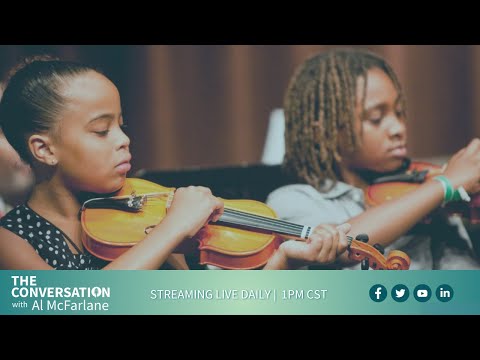
May 24, 2023 – Walker West Music Academy gets an early start on expansion. Join us for a Wednesday episode of The …
The post Braxton Haulcy and the Expansion of Walker|West Music Academy first appeared on BlackPressUSA.
-
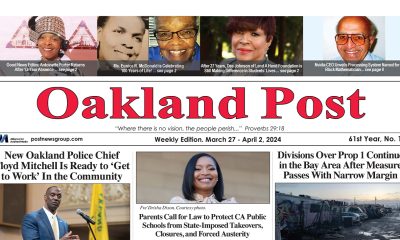
 Activism4 weeks ago
Activism4 weeks agoOakland Post: Week of March 27 – April 2, 2024
-
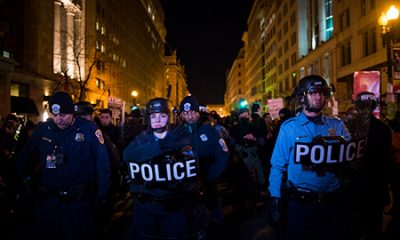
 #NNPA BlackPress4 weeks ago
#NNPA BlackPress4 weeks agoCOMMENTARY: D.C. Crime Bill Fails to Address Root Causes of Violence and Incarceration
-

 #NNPA BlackPress4 weeks ago
#NNPA BlackPress4 weeks agoMayor, City Council President React to May 31 Closing of Birmingham-Southern College
-
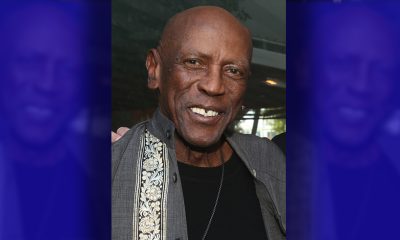
 #NNPA BlackPress4 weeks ago
#NNPA BlackPress4 weeks agoBeloved Actor and Activist Louis Cameron Gossett Jr. Dies at 87
-
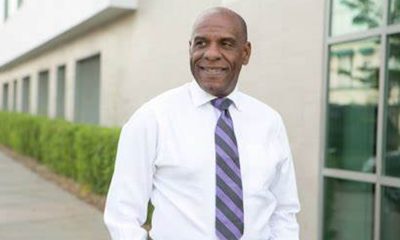
 Community1 week ago
Community1 week agoFinancial Assistance Bill for Descendants of Enslaved Persons to Help Them Purchase, Own, or Maintain a Home
-

 Activism3 weeks ago
Activism3 weeks agoOakland Post: Week of April 3 – 6, 2024
-
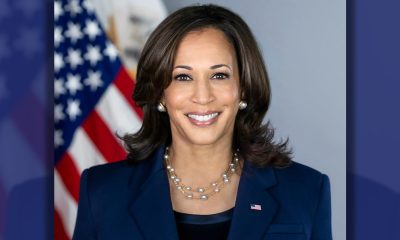
 Business1 week ago
Business1 week agoV.P. Kamala Harris: Americans With Criminal Records Will Soon Be Eligible for SBA Loans
-
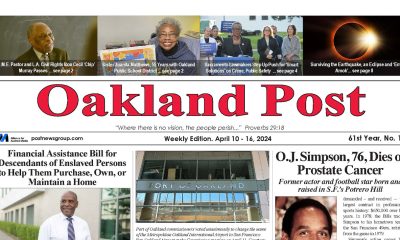
 Activism2 weeks ago
Activism2 weeks agoOakland Post: Week of April 10 – 16, 2024

